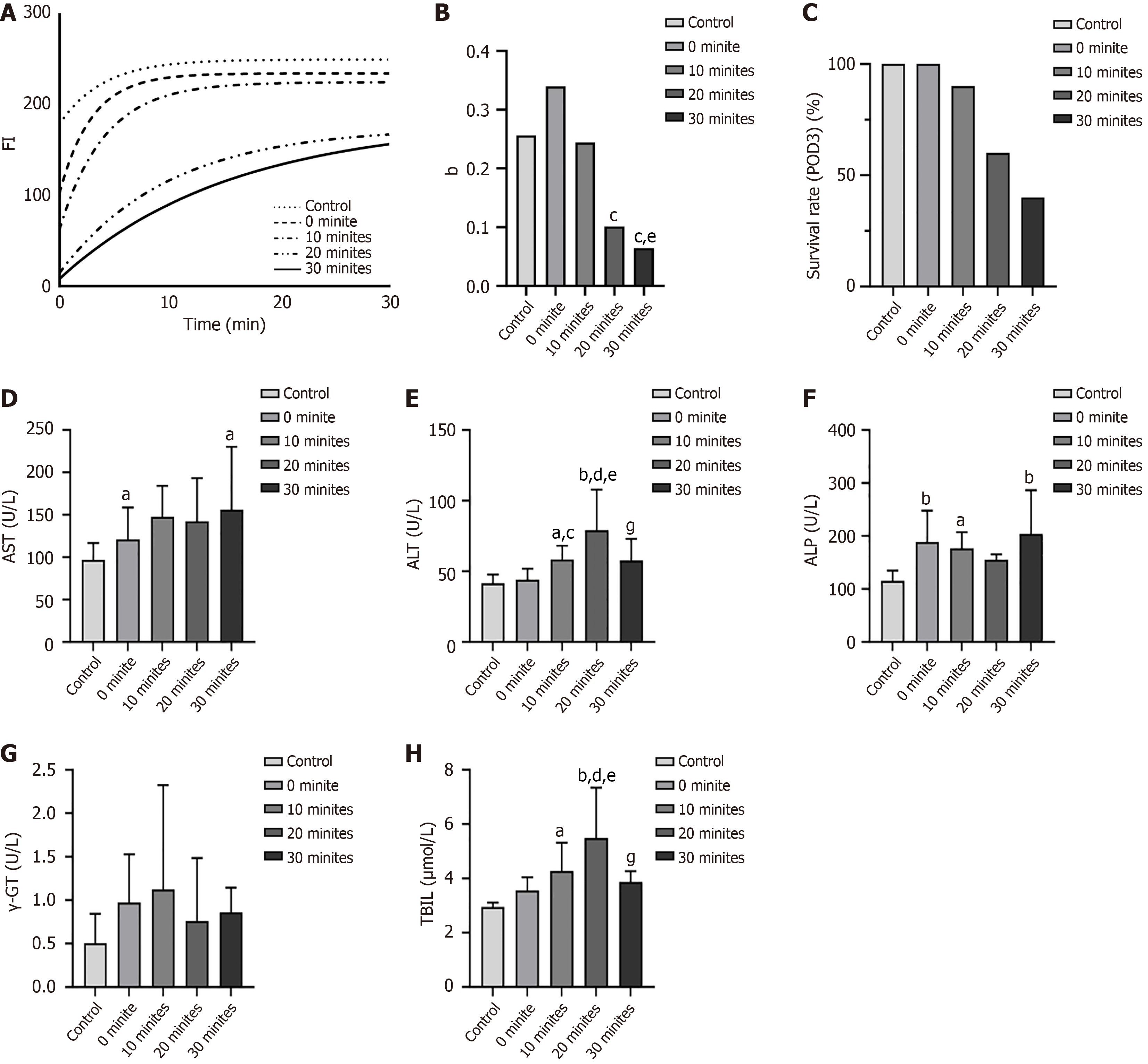Copyright
©The Author(s) 2025.
World J Gastroenterol. Mar 7, 2025; 31(9): 103188
Published online Mar 7, 2025. doi: 10.3748/wjg.v31.i9.103188
Published online Mar 7, 2025. doi: 10.3748/wjg.v31.i9.103188
Figure 5 Survival rate (postoperative day 3), near-infrared fluorescence curve, and liver function (postoperative day 3).
A: Near-infrared fluorescence curves; B: Near-infrared fluorescence curve growth rates; C: Survival rates; D: Serum aspartate aminotransferase levels; E: Serum alanine aminotransferase levels; F: Serum alkaline phosphatase levels; G: Serum gamma-glutamyltransferase levels; H: Serum total bilirubin levels. aP < 0.05 vs control group; bP < 0.01 vs control group; cP < 0.05 vs 0-minute group; dP < 0.01 vs 0-minute group; eP < 0.05 vs 10-minute group; gP < 0.05 vs 20-minute group. FI: Fluorescence imaging; POD 3: Postoperative day 3; AST: Aspartate aminotransferase; ALT: Alanine aminotransferase; ALP: Alkaline phosphatase; γ-GT: Gamma-glutamyltransferase; TBIL: Total bilirubin.
- Citation: Yu JW, Xiang LB, Dong XJ, Yang CX, Wang L, Liu XY, Song YH, Bai XJ, Xiao JW, Ren L, Xu QH, Yang GH, Lv Y, Lu Q. Shortening the recipient warm ischemia time could be a strategy for expanding the liver donor pool. World J Gastroenterol 2025; 31(9): 103188
- URL: https://www.wjgnet.com/1007-9327/full/v31/i9/103188.htm
- DOI: https://dx.doi.org/10.3748/wjg.v31.i9.103188









